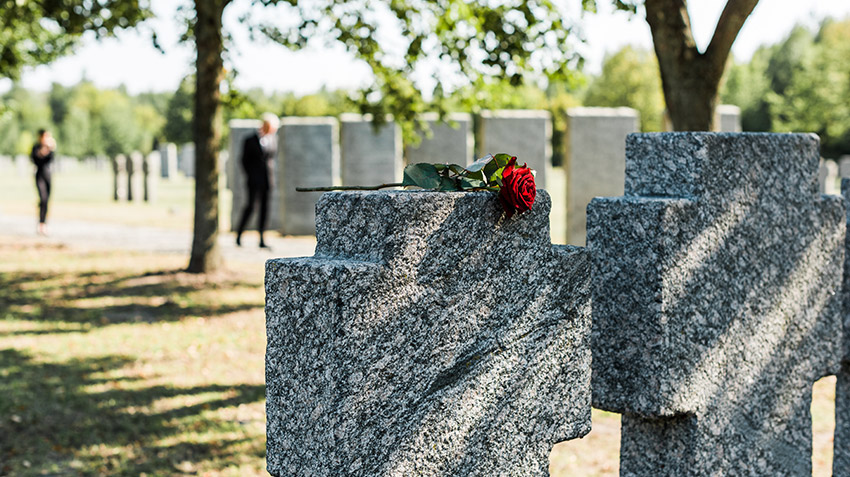
Choosing a final resting place for a loved one is one of the most emotionally significant decisions a family will ever make.
The grief and sorrow that accompany this process are already overwhelming. That’s why understanding the available types of graves is more than just a practical necessity. It is a way to honor the life of the person who has passed and make a choice that reflects their values, your family’s beliefs, and your personal preferences.
Acknowledging the emotional aspect of the decision
Many families are surprised by how many choices they must make so quickly after a loss. Selecting a grave type may feel secondary in the moment, but it can have lasting emotional and financial implications. It is important to make an informed choice, whether planning or arranging a burial under urgent circumstances.
What this guide will help you learn
This guide explains the most common types of graves, including their unique features, costs, and cultural considerations. It also outlines newer and more sustainable options that are gaining popularity. By the end, you will have a clearer understanding of your choices and what questions to ask when speaking with a cemetery or funeral provider.
What is a grave, and why does it matter?
A grave is a designated space for burying human remains, either through traditional means or as part of a cremation burial. Its primary purpose is to offer a place of remembrance and peace for surviving loved ones. The type of grave chosen often reflects personal values, spiritual beliefs, and financial considerations.
There are some common misconceptions about burial, including the belief that all graves are the same or that cremated remains cannot be buried. In reality, types of graves vary widely, and they can differ based on cultural practices, religious requirements, environmental considerations, and regional cemetery regulations.
Grave styles also differ greatly around the world. In some cultures, communal burials are customary, while others prioritize individual or family plots. Some traditions emphasize specific orientations or burial items, and others allow only natural or biodegradable materials.
What are traditional in-ground graves?
Traditional in-ground graves remain one of the most widely selected options in the United States. A single grave typically contains one casket and is marked with a headstone or grave marker. These graves are the standard offering in most cemeteries and are often located in large, organized sections.
A double-depth grave allows two caskets to be placed vertically in the same plot, which can be a cost-effective option for couples or family members who wish to be buried together.
Family plots consist of several adjacent graves reserved for members of the same family. These plots allow families to be laid to rest near one another, maintaining a sense of closeness even in death.
The advantages of traditional graves include accessibility, familiarity, and compatibility with most religious traditions. However, cost, long-term maintenance, and space availability should also be considered.
What are lawn crypts and pre-installed vaults?
Lawn crypts are pre-constructed burial systems installed in the ground before the actual interment. They often include built-in drainage and a concrete liner to protect the casket. Unlike traditional burial, which may require the family to purchase a separate vault or liner, these systems come with it already in place.
These types of graves are designed for durability and can be more environmentally stable, as they prevent soil collapse and aid in managing groundwater. Many cemeteries prefer them for ease of maintenance and aesthetics.
Are above-ground graves an option?
Above-ground burial options are increasingly popular, especially in urban areas where land is limited. A private mausoleum is a structure built for an individual or family and often reflects highly personalized architecture and design.
A community mausoleum offers individual crypt spaces within a shared building. These are more affordable than private mausoleums while still allowing for an above-ground resting place.
The key difference between a crypt and a niche lies in their purpose. A crypt is designed to hold a full-sized casket, while a niche is a small compartment meant for cremated remains.
What is a green or natural burial?
Green burial, also known as natural burial, is an environmentally conscious alternative that avoids embalming fluids, metal caskets, or concrete vaults. Instead, the body is placed in a biodegradable shroud or casket and buried in a natural setting, such as a meadow or forest.
Families who prefer this method often do so out of respect for nature or to reduce their environmental footprint. These graves may not have traditional headstones but often use flat natural markers or digital memorials. Before choosing this option, it is important to understand local regulations and confirm that the cemetery is certified for green burial practices.
Can you bury cremated remains?
Cremated remains can be buried in several ways. In-ground urn burials are becoming more common, especially for those who wish to place ashes in a family plot. Some cemeteries offer dedicated cremation plots that are smaller and more affordable than standard grave sites.
Columbarium niches provide above-ground spaces for urns, typically within a wall structure in a cemetery or chapel. Companion cremation plots allow two urns to be buried together, often in the same space as a traditional casket would require.
Families also have the option to customize these spaces with decorative urns, engraved plaques, or garden features that serve as tributes.
How do cultural and religious beliefs affect grave types?
Grave selection is often influenced by deeply rooted cultural and religious beliefs. Jewish traditions generally require burial within 24 hours in a simple wooden casket, while Islamic burial practices involve placing the body on its right side facing Mecca without a casket or vault in some cases.
Christian burials can vary widely depending on denomination, but typically involve embalming and casket interment. Indigenous practices and multicultural traditions may emphasize the use of natural materials, symbolic items, or communal spaces, and these can differ significantly by region.
What makes military and veteran graves unique?
Veterans are eligible for specific burial benefits through the U.S. Department of Veterans Affairs. This includes burial in a national cemetery, a standard government headstone, and sometimes financial assistance with funeral costs.
Military graves follow uniform guidelines for inscriptions and placement, which distinguish them from private cemetery options. These graves serve as a symbol of service and sacrifice, offering families peace of mind and national recognition.
Are there special grave options for infants and children?
Yes, many cemeteries have designated areas for infants and children, acknowledging the profound emotional impact of such losses. These areas often feature smaller plots, unique markers, and spaces designed for quiet reflection.
Some providers offer memorial sculptures, benches, or garden areas specifically created to comfort grieving parents and families. Emotional support resources may also be available through hospital and funeral home partnerships.
What types of headstones and grave markers are available?
Grave markers range from flat plaques to upright headstones, benches, and even ledger stones that cover the entire grave. Materials include granite, marble, and bronze, each with its own aesthetic and durability considerations.
Customization options are extensive and may include religious symbols, photographs, inscriptions, and custom shapes. Cemetery rules may dictate marker size, design, and placement, so it’s essential to confirm regulations before making a selection.
How do you choose the right grave type?
The right choice depends on personal preferences, religious or cultural values, and budget. For some families, pre-planning allows time to research and make decisions thoughtfully. In urgent situations, working with a compassionate funeral provider can help ease the process.
Key questions include how long you want the grave maintained, whether you prefer burial or cremation, and whether religious customs must be followed. Knowing the types of graves available empowers families to make a decision they can feel at peace with.
Frequently Asked Questions
Below are some additional questions to consider:
Is it possible to move a loved one’s remains to a different type of grave later on?
Yes, exhumation and reburial are possible, but they require legal permissions and coordination with both cemeteries involved. Costs and emotional considerations should be taken into account.
Do all cemeteries offer the same types of graves?
No, not all cemeteries offer every grave type. Availability may vary depending on location, land use, and local regulations. Always check with your chosen provider.
Can graves be passed down through generations?
In many cases, family plots and grave rights can be inherited. Legal documentation and cemetery policies will determine how ownership is transferred.
Why understanding the types of graves is important
Knowing your options when it comes to types of graves can make a deeply emotional time a little more manageable. Whether you’re planning or making a choice during a time of loss, having clarity can offer comfort and confidence. The type of grave chosen becomes a lasting tribute to a life lived and a legacy remembered. Get in touch with a professional funeral services provider in Pittsburgh today to learn more about the different kinds of graves and which is the ideal one for your loved one’s final resting place.



